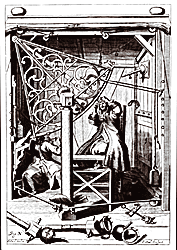
|
Hevelius's identity with Tychonic practice in astronomy offered positive associations when building an observatory, but raised questions about the status of his results. This is clear from the reaction of some of his contemporaries, particularly in regard to his reluctance to adopt the newly introduced telescopic sights. Robert Hooke, for example, while being careful to preserve the reputation of 'the Noble Ticho', charged Hevelius with ignoring subsequent progress in practical astronomy. John Flamsteed, likewise, doubted whether Hevelius, for all his work, was actually improving on the accuracy of Tycho's observations at all: 'it will be difficult', he wrote, 'to judge whether wee ought to make use of Tychoes Catalogues or his when they come forth.'
|